new posts in all blogs
Viewing: Blog Posts Tagged with: plants, Most Recent at Top [Help]
Results 1 - 25 of 37
How to use this Page
You are viewing the most recent posts tagged with the words: plants in the JacketFlap blog reader. What is a tag? Think of a tag as a keyword or category label. Tags can both help you find posts on JacketFlap.com as well as provide an easy way for you to "remember" and classify posts for later recall. Try adding a tag yourself by clicking "Add a tag" below a post's header. Scroll down through the list of Recent Posts in the left column and click on a post title that sounds interesting. You can view all posts from a specific blog by clicking the Blog name in the right column, or you can click a 'More Posts from this Blog' link in any individual post.

By: Hannah Charters,
on 7/27/2016
Blog:
OUPblog
(
Login to Add to MyJacketFlap)
JacketFlap tags:
food and drink,
cooking,
gardening,
Maps,
Multimedia,
herbs,
spices,
plants,
map,
Food & Drink,
Oxford Reference,
ingredients,
OR,
*Featured,
food facts,
Health & Medicine,
Online products,
seasoning,
Arts & Humanities,
oxford online,
floriography,
national herbs and spices day,
Add a tag
On supermarket shelves, we are given a mind-numbing array of choices to select from. Shall we have some peppercorns on our macaroni, some cinnamon for baking, or a bit of rosemary with roast pork? Five hundred years ago, however, cooking with herbs and spices was a much simpler choice.
The post Around the world in spices and herbs appeared first on OUPblog.
Cultures normally develop because of beliefs. Some stem from religion (like the Native Americans belief that the Earth is the one true life source given to all by the Maker) while others focus on a societal structures (such as America’s central conviction of freedom).
And so when I first started creating the world of Kailmeyra, a world without evil, I thought a great deal on how a society like that could even exist. If we assume that evil stems from hatred, it only made sense that the Alfar would need a counterbalance, which would obviously be love. I chose to expand that to include all positive emotions and intent.
For years, scientists have been studying the power of positive thoughts. That’s nothing new. But few stop to think of the power of intent.
An intent is defined as “… the state of a person's mind that directs his or her actions toward a specific object.”
For example, two men volunteer to work on a Habitat for Humanity house. One signs up because he needs community service hours, the other grew up in abject poverty
and never knew what it was like to sleep in his own bed.

Both men show up at the same time and do the same tasks. But which one is going to go above and beyond? Which one is going to make sure the nails are driven in straight, the paint hasn’t dripped on the new carpet, and the baseboards are installed properly?
I’ve found that those who do a job because they view it as an obligation tend to do the minimum amount required, whereas those that have a deep-seeded passion for helping, usually give it everything they have.
And that, my friends, is the power of intent.
But what does this have to do with the Kailmeyra series and eating?
Everything.

In Kailmeyra, intent gives off energy. Alfar eat to fuel their bodies, the dwelling in which their spirit lives. Because of this, they reverently plant their foods in the richest soils, they tend to them daily and watch them grow. And they only take what they need, allowing other animals to benefit as well.
Bottom line, their intent is to use food to sustain the life they’ve been given.
So what is America’s intent when it comes to food?
Scary question, isn’t it?
It seems to me America’s intent isn't necessarily to put the best fuel in as it is to keep our stomach's from growling. And it must be convenient. And it must be fast. Oh, and it must taste yummy!

Let's face it. Most of us know little about where our food is grown, how it’s processed or even what’s in it. Our intent is to stave off hunger as we run about our daily lives. Breakfast normally consists of something from a box with milk splashed on it while lunch is served on a tray in a cafeteria. When my kiddos were young I cannot tell you how many times we ran through a drive through to pick up something to eat for dinner as we scurried from one activity to the next. Honestly, not once did I stop and question what was in that burger or where it came from. Nor did I think a thing about handing my child a soda or a sweet tea. (It should be noted that my kiddos are now in college. I’m happy to see there is more awareness about nutrition today, and so I hope I’d be a little more diligent about it now. ;))
I never thought about the intent of eating until I wrote the first book in the Kailmeyra series. While I would love to report that I’ve lost tons of weight and am now svelte and gorgeous, unfortunately, that is not the case. I can tell you that because of the series, we now eat only organic eggs, milk, fruits and veggies, we’ve stopped eating so much red meat and I haven’t had a soda in five years.
Hey, that’s something, right?
Thanks so much, Shelley, for having me on the blog!
Thanks for stopping by to share your food for thought, Elizabeth!
If you’d like to know more about the Kailmeyra series, the first book,
The Light of Asteria, is available (most FREE) on the following platforms:
And you can find Elizabeth here:
Elizabeth is an author, teacher, and publishing professional who began her career as a national presenter for Resource Profiles, where she developed teacher seminars designed to foster creative brain stimulation. Moving into formal education, she helped at-risk students improve their writing skills as well as created and implemented a creative writing/blogging program that centered on teaching the 21st-century learner. Works stemming from this initiative were published online and seen in over 40 countries.
Elizabeth receives invitations to speak nationwide at schools and book clubs about Young Adult (YA) content and writing. She co-founded the popular book site, Indie-Visible.com, which reaches thousands of people throughout the world. The writer support and reader interest group promotes and interacts with followers on Goodreads, Facebook, Twitter, Tumblr and various other blog sites. Elizabeth has a Master's degree from Austin Peay State University, where she was trained in classical opera. She graduated Magna Cum Laude and was a member of the Phi Beta Kappa Honor Society.The Light of Asteria
received Honorable Mention at the New York Book Festival.

By: Franca Driessen,
on 10/10/2015
Blog:
OUPblog
(
Login to Add to MyJacketFlap)
JacketFlap tags:
Books,
animals,
reading list,
biology,
earth science,
ecology,
plants,
conservation,
life science,
*Featured,
Science & Medicine,
Earth & Life Sciences,
biology week,
Add a tag
In honour of Biology Week 2015, we have compiled a reading list of biology titles that have helped further the cause through education and research.
The post Biology Week: a reading list appeared first on OUPblog.

By: JulieF,
on 8/12/2015
Blog:
OUPblog
(
Login to Add to MyJacketFlap)
JacketFlap tags:
Books,
evolution,
ecology,
plants,
natural selection,
Charles Darwin,
symbiosis,
*Featured,
Science & Medicine,
evolutionary biology,
Earth & Life Sciences,
Ecological Society of America,
#ESA100,
#ESA2015,
Approaches to Plant Evolutionary Ecology,
G.P. Cheplick,
phenotypic variation,
plant biology,
Add a tag
The agents of natural selection cause evolutionary changes in population gene pools. They include a plethora of familiar abiotic and biotic factors that affect growth, development, and reproduction in all living things.
The post The hidden side of natural selection appeared first on OUPblog.

By: Linda Kay,
on 7/15/2015
Blog:
Watercolor Wednesdays
(
Login to Add to MyJacketFlap)
JacketFlap tags:
watercolor painting,
plants,
abstract,
watercolorist,
small format art,
Linda Snider Ward,
Louisiana artist,
Linda Kay Thomas,
watercolor daily,
Add a tag
This little piece was actually created in the hospital while I was recovering from back surgery. It helped to have my watercolor paints and paper with me for my two week stay. More of my artwork can be seen on my
website and my
Etsy shop
If you're a watercolorist and would like to join this site, send me a link to your blog or website in a comment, and I'll add you to the site.
Take Care

अभी कुछ देर पहले मणि मेरे घर खीर ले कर आई … अरे वाह खीर !!!! किस खुशी में … वो बोली कि जब पिछ्ले दिनों वो छुट्टियों में बाहर चले गए थे तो पौधे सूख गए थे. एक को तो बचा नही पाई थी पर एक पौधे को उसने बचा लिया. उसकी खूब देखभाल की सुबह दोपहर शाम पानी दिया और आज सुबह उसमे फूल खिला है. उसी खुशी में खीर … मैने उसकी आखों मे झिलमिलाती खुशी देखी.
सच, हम अक्सर पौधो के मामले मे सुस्त हो जाते हैं अगर उन्हे लगाया है तो पानी देना तपती गर्मी से बचाना भी हमारा ही फर्ज है. घर की सुंदरता बढाने के साथ साथ वो हमारे अच्छे दोस्त भी है. अगर आप भी बचा सकते हैं तो किसी को मुरझाने से बचा लिजिए… Take Care of plants …
पर्यावरण को सुरक्षित रखने के बहुत लोग अपने अपने तरीके से संदेश देते हैं … कोई टीवी पर, कोई नाटिका के माध्यम से तो कोई गीत गाकर तो कोई समाचार पत्र मे माध्यम से जनता को प्रेरित करते हैं …
दैनिक भास्कर ने भी एक अभियान छेडा
बरसात के इस मौसम में अपने नाम का पौधा लगाएं।
औषधीय पौधा लगाएंगे तो और भी उत्तम होगा।
एक पौधा हमारे लिए माध्यम बनेगा, अपने बचपन को फिर से जीने का।
मा नसून ने दस्तक दे दी है। फिलहाल इसने तेजी नहीं पकड़ी है। मगर पूरी उम्मीद है कि कुछ देर से ही सही, घटाएं जमकर बरसेंगी।
हर वर्ष की तरह, इस बार भी दैनिक भास्कर समूह अपने करोड़ों पाठक परिवारों के साथ मिलकर आज से पौधरोपण अभियान की शुरुआत कर रहा है। यही तो सही समय है, जब हमारे द्वारा लगाए गए पौधे धरती की गोद में आसानी से पल-बढ़ सकते हैं।
आइए, आज हम एक नई परंपरा की शुरुआत भी करते हैं। बरसात के इस मौसम में हम अपने नाम का एक पौधा लगाते हैं। और फिर उसकी देखभाल उतने ही प्यार से करें, जैसी हमारे बड़े हमारी करते थे। यकीन मानिए, जब हम रोज सुबह अपने नाम के इस पौधे को देखेंगे तो हमारे चेहरे पर कुछ वैसी ही मासूम मुस्कुराहट होगी, जैसी बचपन में हुआ करती थी। वह पौधा हमारे लिए माध्यम बनेगा, अपने बचपन को फिर से जीने का।
ऐसा हम अपने परिवार के सभी सदस्यों के लिए करें। परिवार का प्रत्येक सदस्य अपने नाम का एक पौधा लगाए। यदि भास्कर के करोड़ों पाठक अपने नाम का एक पौधा लगाएं और उसकी देखभाल करें, तो हम पर्यावरण को हराभरा करेंगे ही, आने वाली पीढ़ियों को अपने नाम की अनमोल विरासत भी देंगे।
www.bhaskar.com
Via bhaskar.com
Take Care
The post Take Care appeared first on Monica Gupta.

By: scriberess,
on 4/13/2015
Blog:
A. PLAYWRIGHT'S RAMBLINGS
(
Login to Add to MyJacketFlap)
JacketFlap tags:
humor,
comedy,
death,
funny,
play,
plants,
short play,
comedy sketch,
play-ette,
continuing story,
Mr. and Mrs. Everybody talk plants,
plant life,
scenes from life - a short playette,
short comedy,
Add a tag
SCENE: DEN IN THE EVERYBODY HOUSEHOLD.
AT RISE: MRS. EVERYBODY IS HAVING AN IMPORTANT CHAT WHILE MR. EVERYBODY IS READING A NEWSPAPER
MRS. EVERYBODY
Why? Why must you torture me like this? What did I ever do to deserve this treatment other than heap undying love and devotion to your upkeep?
(MR. EVERYBODY glances up and returns to reading his book)
MRS. EVERYBODY
You seem to be dying slowly right in front of my eyes and I'm at a loss how to save you
MR. EVERYBODY
(looking around)
You talking to me?
MRS. EVERYBODY
Fed you top of the line nutritional supplements and this is the thanks I get
MR. EVERYBODY
I appreciate your cooking, honey. You make fantastic meals and really, I'm in great shape
MRS. EVERYBODY
You are not aging well, sweetheart
MR. EVERYBODY
(gets up to examine himself in the mirror on the wall behind him)
For the record, I'm in better condition now than I was when we married. Sure there's a few extra inches on my stomach but that's due to your good cooking. Work out on the tread mill...
MRS. EVERYBODY
I fear it's time for us to part, sweetheart. You are halfway between this world and the next
MR. EVERYBODY
Say what? Is it something I said?
MRS. EVERYBODY
You've given me a lot of pleasure over the years. Your nightly performance kept me riveted and it's something I will cherish all my life
MR. EVERYBODY
Hey! There's still a lot of life left in this body! Is there somebody else? I can change, y'know!
(MRS. EVERYBODY turns around and stares at her husband)
MRS. EVERYBODY
It's just so hard to say goodbye! Did you say something?
MR. EVERYBODY
You never said a word. I deserve to know who's the new love of your life!
MRS. EVERYBODY
Say what? What are you babbling about?
MR. EVERYBODY
You're leaving me!
MRS. EVERYBODY
Are you insane? You thought that... That is really funny
MRS. EVERYBODY
There is nothing funny about being informed that your wife is leaving your for someone else. It's always the husband that is the last to know
MRS. EVERYBODY
Husband of mine - I was talking to my prayer plant here that is slowly croaking after 40 years and I'm about to replace her with a new one
MR. EVERYBODY
How was I supposed to know? There was only you and me in the room and I never guessed you were talking to a...a... house plant
MRS. EVERYBODY
I've raised this houseplant from a small little stalk. Fed her...coddled her...and she gave me years of pleasure but lately she seems to have taken a turn for the worst. The writing is on the wall...or in this case, in all those brown leaves.
MR. EVERYBODY
A plant is a plant is a plant. Don't know what the big thing is. Just empty the pot and replace it with a new one. Simple
MRS. EVERYBODY
How could you be so cruel and callous! You just can't...discard it like it that!
MR. EVERYBODY
I dunno. Never bothers you to do that with your clothes
MRS. EVERYBODY
Besides, I read an article that said plants can sense pain and they react to it. How could I betray my friend after all the years we've been together? I feel like a killer! I feel like I'd be ripping out her guts and tearing her apart
MR. EVERYBODY
Not that I pretend to feel what you feel but check this out
(MR. EVERYBODY shows her a page of the newspaper)
MRS. EVERYBODY
What's this? The Plant-a-atrium is having a sale on houseplants?
(turns to look at plant and at newspaper ad)
(MRS. EVERYBODY cont'd.) 'Parting is such sweet sorrow my formerly green friend. Go meet your other friends in the composter! Do not think badly of me for I shall remember you with great fondness.' I'm ready.
MR. EVERYBODY
Ready for...?
MRS. EVERYBODY
To make new friends at the Plant-a-atrium, silly! We all gotta go some time. I mean, it's just a silly plant for heaven's sake...

By: Alex Guyver,
on 12/13/2014
Blog:
OUPblog
(
Login to Add to MyJacketFlap)
JacketFlap tags:
Books,
science,
environment,
biology,
ecology,
plants,
population,
biodiversity,
habitat,
David Gibson,
*Featured,
Science & Medicine,
Earth & Life Sciences,
ecologists,
biogeography,
metapopulation,
Methods in Comparative Plant Population Ecology,
Add a tag
“Life is a train of moods like a string of beads, and, as we pass through them, they prove to be many-colored lenses which paint the world their own hue, and each shows only what lies in its focus.” Ralph Waldo Emerson, Experience, 1844.
The concept of looking at nature through multiple lenses to see different things is not new and has been long recognized. As always, the devil is in the details. Recent developments in analytical tools and the embracement of an integrative metapopulation concept and the newly emergent field of functional biogeography, are allowing exciting new insights to be made by population ecologists that have direct bearing on our understanding of the effects of environmental change on biodiversity patterns.
The metapopulation concept posits that isolated populations of organisms are connected through dynamics of dispersal and extinction. Across a landscape, areas of suitable habitat occur, which at one point in time may or may not host a viable population of a particular species. I study this concept with terrestrial plants, and have asked what environmental conditions determine suitable habitat for metapopulations.
Much of the foundational work in this topic was conducted on butterfly populations in meadows across otherwise forested habitat. Regardless of study organism, embracement of this concept has been enough to make population ecologists realize that studying single populations may give only a limited view on generalities of ecology and evolution. Indeed, taking this concept on board, has led population ecologists to want to predict in which areas of suitable habitat across the landscape a new population may establish.
“There’s no getting away from field work!”
There are obvious conservation and management implications that result from being able to predict the geographical distribution of a species, whether an invasive exotic spreading across the globe, or an endangered organism. Unfortunately, just knowing where a species or a group of species may occur across the landscape is not enough. Individuals in some populations may have low fitness and their populations may be barely hanging on. For some species such as potential island colonizers, it has been proposed that limited ability to colonize vacant habitat patches may be due to the occurrence of closely related species occupying a similar niche.
Important ‘missing pieces’ from a full understanding of the metapopulation puzzle have been through inclusion of population growth rate estimates and incorporation of species evolutionary relationships (i.e., their phylogenic ancestry). Population ecologists have been toiling away making fitness estimates of their species of interest in the field. Systematists, on the other hand, have been grinding it out in the lab to generate the molecular data necessary to construct phylogenetic trees to help classify their species.
Community ecologists studying multispecies assemblages, as a third-dimensional angle to this question, have been working with geographers to develop species distribution models. It is only recently that the analytical tools have emerged that allow these groups of scientists to collaborate and address questions of common interest about metapopulations.For example, Cory Merow and colleagues have recently shown how Bayesian models can be used to propagate uncertainty estimates in the application of integral projection models (IPMs) to forecast growth rates as part of predictive demographic distribution models (transition matrix models could also be used). In other words, species geographic distribution predictions can be improved by accounting for population-level fitness estimates.
In another study, Oluwatobi Oke and colleagues have shown how phylogenetic relationships among 66 co-occurring species in populations across a metapopulation structured landscape of Canadian barrens can improve understanding of species distribution patterns. The basis for Oke et al.’s phylogenetic patterns among their species was the large angiosperm supertree based upon nucleotide sequence data of three genes from over 500 species.
The basis for all of the work described above are precise and accurate estimates of individual fitness and population growth rates. There’s no getting away from field work! Methods for carrying out the field work component of these studies, to allow the use of modern statistical methods including Bayesian analysis, IPMs, and transition matrix models, have to be planned and carried out with care. We have come a long way in the last decade in enabling population studies to scale up to address fundamental questions at higher levels of the ecological hierarchy.
The field of population demography is moving fast. For example, the recent launch of the COMPADRE Plant Matrix Database, with accurate demographic information for over 500 plant species in their natural settings worldwide, will make addressing these scale-related types of comparative evolutionary and ecological questions even more tractable in the future.
The post Population ecologists scale up appeared first on OUPblog.


By: Sara Pinotti,
on 10/12/2014
Blog:
OUPblog
(
Login to Add to MyJacketFlap)
JacketFlap tags:
plants,
intelligence,
QI,
*Featured,
Science & Medicine,
Earth & Life Sciences,
Psychology & Neuroscience,
anthony trewavas,
plant behaviour,
Plant Behaviour and Intelligence,
Books,
Add a tag
Ask anybody that question and you will probably get a different answer every time. Most would argue that intelligence is limited to mankind and give examples of brainy people like Einstein or Newton.
Others might identify it as being clever, good in exams or being smart, having a high IQ. But was Einstein particularly intelligent or Newton? Both were very gifted at mathematics and certainly imaginative but outside that, their lives didn’t seem to be any smarter or express particular cleverness than millions of others; in some respects perhaps the opposite.
We don’t know how well either would have done in IQ tests. Although successful people generally have a higher IQ than average, the correlation with success is chequered and not outstanding. So it is hardly surprising one recent article found at least 70 different versions of intelligence and then proceeded to provide a novel summary of its own.
Intelligence is an aspect of behaviour, and behaviour is the response to our environment, more properly the signals we perceive. The word intelligence is derived from the Latin interlegere, which simply means to choose between. Choice implies something in past behaviour has opened up two or more different courses of future action. Skill in assessing and taking the right choice within the present context we should describe as intelligent behaviour.
IQ supposedly measures some intrinsic property of the individual brain but actually it was set up simply to identify pupils with special needs. The present test sets problems requiring some numeracy, spatial recognition, and logic; it is largely academic in character but also strongly cultural.
We can see more clearly what intelligence is about if we take away the present cultural bias for intelligence. Go back 50-100,000 years to earlier mankind. The problems he/she faced were basic: finding food and mates, and avoiding predators. Failure led to premature death; success increased sibling number thus fulfilling the basic biological property we call fitness. Advanced society has simply removed the fundamental base of intelligence.
No wonder it is so difficult to characterise. One psychologist Howard Gardener has imaginatively identified all kinds of intelligence, emotional and physical intelligence, linguistic, musical and spatial intelligence, and logico-mathematical intelligence. All except the last one would be crucial for early mankind’s survival.
But I don’t see Einstein or Newton genius though they are in logico-mathematical intelligence as doing particularly well 100,000 years ago. Furthermore mathematics simply didn’t exist then except perhaps simple numeracy. It is a modern day activity in a society in which the fundamentals of survival are no longer pressing.
The most common view amongst psychologists is that intelligence relates to problem-solving and given that the quality does vary amongst individuals, a capacity for problem-solving. But then we are faced with a conundrum. All living things from bacteria plants to animals face the same basic issues of life, finding food whatever it is, finding mates, and avoiding predators; all these require problem-solving and the sheer variety of them for any one individual means the solution can’t be fixed in the genes as some sort of homunculus but necessitates assessment, a process that in some way incorporates knowledge of past history and the ability to choose between alternatives.
Even swimming bacteria have to choose between swimming towards food and away from poisons. To do the opposite is guaranteed disaster, the decision leading to survival and fitness is obvious. But the assessment there does not involve brains or neural pathways; bacteria simply use a protein network whereas animals use a neural network.
It is the complexity of networks of interacting molecules or cells that provide for intelligent behaviour. In swarm intelligence interactions relatively simple in number occur between effectively cloned organisms in the self-organising beehive or colony.
Similar problems are faced by higher plants. Plant behaviour is not familiar to many; are they not often considered still life?
But higher plants simply work on a different time scale. They lack a nervous system but have complex chemical communication between millions of cells that forms the basis of assessment and leads to decisions within the context of detailed environmental perception.
Much visible behaviour requires growth and in virtually all organisms, growth can be a slow business. Plants forage for the resources of light, minerals, and water. They possess self-recognition and recognise competitors. They possess the capabilities of what we call learning and memory, particularly in response to herbivory. But all this in molecules, not nerves, although electrical connection occurs and is used to transfer information. Intelligent behaviour is as essential for them as any other organism.
The underpinning behaviour is just as surprising. Leaves maintain a relatively constant internal temperature, roots sense and seek out resources, the cambium (a kind of inner skin) comparatively assesses the behaviour of branch roots or shoots and awards additional resources to those which are more likely to be profitable in the future.
These are positive responses to signals in their environment that will increase fitness. Selection also operates in mating by a variety of methods to ensure the most fit do mate. Self-organisation is a fundamental plant attribute. Intelligent behaviour is a holistic quality expressed only by the individual and in plants it finds its most surprising expression but without it plants would not be here.
Headline image credit: Photograph of a carnivorous plant, cultivated by Martha Miller, part of a display featured at a First Friday event at the Chemical Heritage Foundation, Philadelphia, PA, USA, on November 6, 2009. Photograph by Conrad Erb, Chemical Heritage Foundation. CC BY-SA 3.0 via Wikimedia Commons.
The post What exactly is intelligence? appeared first on OUPblog.


By: Beth,
on 7/30/2014
Blog:
YALSA - Young Adult Library Services Association
(
Login to Add to MyJacketFlap)
JacketFlap tags:
Camera,
Botany,
Plants,
Leaves,
Leaf,
Crowdsourcing,
iOS,
App of the Week,
Leafsnap,
Add a tag

Name: Leafsnap
Platform: iOS
Cost: Free
Leafsnap has languished for years on my phone. The app represents the sort of big audacious online project that we as librarians need to know about. Merging geographic location with image recognition, it combines reports from the field to produce an interactive electronic guide.
For the end user, Leafsnap is designed to make a “best guess” about the species of a plant, based on an image of a leaf you upload or input through the camera. I hadn’t been able to use it before last week. It’s limitation? Spearheaded by the Columbia University, the University of Maryland, and the Smithsonian Institution, Leafsnap is crowd-sourced, and a caveat warns that the database best reflects the northeasten U.S. for the time being (though there is a U.K. version, too). When I heard someone speculating about the name of a specific tree while I was in Massachusetts, I was happy to put the tool to work.
One word on technique: I had better success when I photographed and cropped around a leaf beforehand, and you will need a “true white” background — the reverse side of an index card works fine. The app converts your image into an “x ray” of the leaf, queries the database and returns with a series of options, all of which contain Leafsnaps as well as more holistic images of matching plants.

Using the apps involves creating an account in Leafsnap’s user-driven botanical database to track your scanning and positive identifications. Inside the app, you’re creating your own log book, marking each species with a swipe, with a geographic distribution as well.

The process of collecting and marking specimens can be addictive; even your most tender-hearted teen will respect the do-no-harm approach to nature the app represents. Within the database, the specimens link to the Encyclopedia of Life, another ambitious, crowd-sourced online project, and there’s an integrated program designed to improve your recognition skills.

It only occurred to me after the fact that leafsnap enables a twenty-first century manifestation of the very nineteenth century impulse for classification among amateur botanists. For contrast, you can see a digitized version of Emily Dickinson’s old school herbarium here.
Leafsnap offers a fun, mobile way to involve the natural world in your summer STEM programming. And while the geographic scope of the database might seem to limit its utility, I’ve found that it works just fine beyond the specified region.
Have a suggestion for App of the Week? Let us know. And find more great Apps in the YALSA Blog’s App of the Week Archive.


By: Hannah Paget,
on 7/25/2014
Blog:
OUPblog
(
Login to Add to MyJacketFlap)
JacketFlap tags:
Earth & Life Sciences,
microbiome,
microbial,
Dalhousie University,
germaphobe,
John Archibald,
Microbial Biodiversity,
microorganisms,
One plus one equals one,
cyanobacteria,
Books,
cancer,
science,
biology,
bugs,
plants,
germs,
microbes,
molecular,
ecosystem,
antibiotics,
amoeba,
bacteria,
symbiosis,
*Featured,
Science & Medicine,
Health & Medicine,
chloroplasts,
mitochondria,
Add a tag
By John Archibald
We humans have a love-hate relationship with bugs. I’m not talking about insects — although many of us cringe at the thought of them too — but rather the bugs we can’t see, the ones that make us sick.
Sure, microorganisms give us beer, wine, cheese, and yoghurt; hardly a day goes by without most people consuming food or drink produced by microbial fermentation. And we put microbes to good use in the laboratory, as vehicles for the production of insulin and other life-saving drugs, for example.
But microbes are also responsible for much of what ails us, from annoying stomach ‘bugs’ to deadly infectious diseases such as tuberculosis and plague. Bacteria and viruses are even linked to certain cancers. Bugs are bad; antibiotics and antivirals are good. We spend billions annually trying to rid ourselves of microorganisms, and if they were to all disappear, well, all the better, right?
This is, of course, nonsense. Even the most ardent germaphobe would take a deep breath and accept the fact that we could no more survive without microbes than we could without oxygen. No matter how clean we strive to be, there are 100 trillion bacterial cells living on and within our bodies, 10 times the number of human cells that comprise ‘us’. Hundreds of different bacterial species live within our intestines, hundreds more thrive in our mouths and on our skin. Add in the resident viruses, fungi, and small animals such as worms and mites, and the human body becomes a full-blown ecosystem, a microcosm of the world around us. And like any ecosystem, if thrown off-balance bad things can happen. For example, many of our ‘good’ bacteria help us metabolize food and fight off illness. But after a prolonged course of antibiotics such bacteria can be knocked flat, and normally benign species such as ‘Clostridium difficile’ can grow out of control and cause disease.

Given the complexity of our body jungle, some researchers go as far as to propose that there is no such thing as a ‘human being’. Each of us should instead be thought of as a human-microbe symbiosis, a complex biological relationship in which neither partner can survive without the other. As disturbing a notion as this may be, one thing is indisputable: we depend on our microbiome and it depends on us.
And there is an even more fundamental way in which the survival of Homo sapiens is intimately tied to the hidden microbial majority of life. Each and every one of our 10 trillion cells betrays its microbial ancestry in harboring mitochondria, tiny subcellular factories that use oxygen to convert our food into ATP, the energy currency of all living cells. Our mitochondria are, in essence, domesticated bacteria — oxygen-consuming bacteria that took up residence inside another bacterium more than a billion years ago and never left. We know this because mitochondria possess tiny remnants of bacterium-like DNA inside them, distinct from the DNA housed in the cell nucleus. Modern genetic investigations have revealed that mitochondria are a throwback to a time before complex animals, plants, or fungi had arisen, a time when life was exclusively microbial.
As we ponder the bacterial nature of our mitochondria, it is also instructive to consider where the oxygen they so depend on actually comes from. The answer is photosynthesis. Within the cells of plants and algae are the all-important chloroplasts, green-tinged, DNA-containing factories that absorb sunlight, fix carbon dioxide, and pump oxygen into the atmosphere by the truckload. Most of the oxygen we breathe comes from the photosynthetic activities of these plants and algae—and like mitochondria, chloroplasts are derived from bacteria by symbiosis. The genetic signature written within chloroplast DNA links them to the myriad of free-living cyanobacteria drifting in the world’s oceans. Photosynthesis and respiration are the biochemical yin and yang of life on Earth. The energy that flows through chloroplasts and mitochondria connects life in the furthest corners of the biosphere.
For all our biological sophistication and intelligence, one could argue that we humans are little more than the sum of the individual cells from which we are built. And as is the case for all other complex multicellular organisms, our existence is inexorably linked to the sea of microbes that share our physical space. It is a reality we come by honestly. As we struggle to tame and exploit the microbial world, we would do well to remember that symbiosis—the living together of distinct organisms—explains both what we are and how we got here.
John Archibald is Professor of Biochemistry and Molecular Biology at Dalhousie University and a Senior Fellow of the Canadian Institute for Advanced Research, Program in Integrated Microbial Biodiversity. He is an Associate Editor for Genome Biology & Evolution and an Editorial Board Member of various scientific journals, including Current Biology, Eukaryotic Cell, and BMC Biology. He is the author of One Plus One Equals One: Symbiosis and the Evolution of Complex Life.
Subscribe to the OUPblog via
email or
RSS.
Subscribe to only science and medicine articles on the OUPblog via
email or
RSS.
Image credit: Virus Microbiology. Public domain via Pixabay
The post Microbes matter appeared first on OUPblog.

I've been working on a series of flowers in watercolor and collage that fit perfectly in this weeks theme over at
Illustration Friday.
Can you tell I'm having fun with these?

By: Emily Smith Pearce,
on 6/10/2014
Blog:
Emily Smith Pearce
(
Login to Add to MyJacketFlap)
JacketFlap tags:
Books,
kids,
games,
toys,
nature,
Crafts,
plants,
weeds,
outdoor fun,
outdoor play,
Kid Crafts,
Add a tag
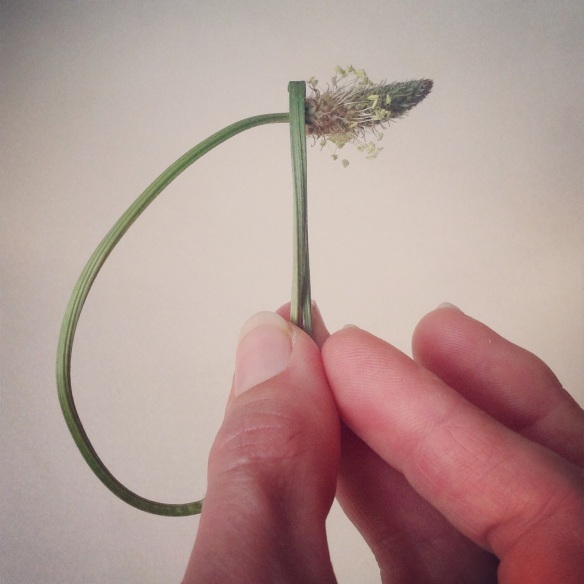
Hi again folks. What have you been up to? I hope it’s getting warm and green wherever you are.
Here in Charlotte it’s very warm now, too warm, but it’s been exciting to see all the flowers make an appearance, and inevitably, there are lots of weeds popping up, too. Lately I’ve been thinking about the things my friends and I used to do with various weeds when we were kids.
- There was the weeds-into-pop-guns trick, pictured above (arrowhead weeds, I just learned they’re called).
- Trying to make a grass blade whistle (okay, not weeds, but still counts)
- Of course making a wish on dandelion heads
Know any others?
I’ve been so focused on my writing goals that I haven’t been doing a lot of crafts and (interesting) cooking, though I do have a few things l’d like to share in the coming weeks. Our last day of school is today, which means my schedule will be quite a bit different from here until the end of August.
I’ll try to be here as much as I can, but you may find me more frequently on Twitter and Instagram, since those are easy for quick snippets. My Twitter handle is @emilysmithpearc and I’m on Instagram as Emily Smith Pearce.
Good news! I reached the goals I set for myself with both my nonfiction and YA novel manuscripts. This is big. So much writing done this year, though it’s easy to wish I had gotten even more done.
Currently reading: The Divorce Papers by Susan Rieger and The Great Green Heist by Varian Johnson (both purchased at Park Road Books). Currently watching: Game of Thrones and Orange is the New Black.



By: Kirsty,
on 3/2/2014
Blog:
OUPblog
(
Login to Add to MyJacketFlap)
JacketFlap tags:
climate change,
oxford journals,
physiology,
life sciences,
conservation physiology,
conservation physiology of plants,
mark van kleunen,
physiological,
Journals,
biology,
botany,
plants,
conservation,
*Featured,
Science & Medicine,
Earth & Life Sciences,
Add a tag
By Mark van Kleunen
Conservation physiology was first identified as an emerging discipline in a landmark paper by Wikelski and Cooke, published in Trends in Ecology and Evolution in 2006. They defined it as “the study of physiological responses of organisms to human alteration of the environment that might cause or contribute to population decline”. Although the case studies and examples presented by Wikelski and Cooke focused on wild animals, they indicated already that conservation physiology should be applicable to all taxa. With the launch of the journal Conservation Physiology – one year ago – this taxonomic inclusiveness was made more explicit, and the definition was broadened to “an integrative scientific discipline applying physiological concepts, tools and knowledge to characterizing biological diversity and its ecological implications; understanding and predicting how organisms, populations and ecosystems respond to environmental change and stressors; and solving conservation problems across the broad range of taxa (i.e. including microbes, plants and animals)”.
Although the definition of conservation physiology, and also the journal with the same name, covers in principle all taxa, plants (and also microbes, and among animals the invertebrates) are still clearly underrepresented. Of the 32 papers that were published in the journal in 2013, only three (9%) focussed on plants. This underrepresentation of plants, however, appears to be a general trend in conservation science, as the journal Conservation Biology had only ten out of 93 contributed papers (11%) focussing on plants in 2013. The journal Biological Conservation did a bit better with 59 out of 309 regular papers (19%) focussing on plants in 2013. Given the importance of plants as primary producers, which are indispensable for all other organisms, and the fact that 10,065 of the 21,286 species (47%) assessed by the IUCN Red List as globally threatened are plants, they clearly deserve more attention in the field of conservation physiology, and conservation science in general.

Conservation science has many important, frequently intertwined, sub-disciplines, including among others conservation policy, conservation genetics and conservation physiology. The strength of physiology, and thus of conservation physiology, is that it focusses on the mechanisms underlying patterns by identifying cause-and-effect relationships, preferably through experimentation. Physiology is directly related to the functioning and function of plants. This means that physiological knowledge is imperative for understanding the habitat requirements of endangered native plants and of potentially invasive exotic plants, and the ecological impacts of invasive exotic plants and migrating native plants. An accessory advantage of working with plants is that they lend themselves extremely well for experimental studies, as they are sessile, can easily be marked, and frequently can be grown in large numbers under greenhouse or garden conditions. Plants are thus ideal objects for conservation physiological studies.
Given that plants are underrepresented, a logical question is what kind of plant studies fall under the umbrella of conservation physiology. The three reviews on plants that were published in Conservation Physiology in 2013 do a great job in setting the scene. Hans Lambers and colleagues reviewed the research on phosphorus-sensitive plants in a global biodiversity hotspot. Many of these species are threatened by the introduced pathogen Phytophthora cinnamomi and by eutrophication; the latter partly due to large-scale application of phosphite-containing fungicides (biostats) that are used to fight the pathogen. This illustrates how one conservation measure may cause undesired side effects. Physiological understanding of how phosphite functions could help to develop alternative fungicides with less negative side effects. Fiona Hay and Robin Probert reviewed recent research on seed conservation of wild plant species. They clearly make the case that if we want to preserve genetic material of wild plant species in ex-situ seed banks for conservation purposes, physiological research is imperative for developing optimal storage, germination and growth conditions. Last but not least, Jennifer Funk reviewed research on physiological characteristics of exotic plant species invading low-resource environments. Prevention of invasions and mitigation of the impacts of invasions requires physiological research that resolves the question whether exotic species manage to invade low-resource environments through enhanced resource acquisition, resource conservation or both. These three reviews thus illustrate already three important plant-related topics in conservation physiology: causes of threat of native plants, ex-situ conservation, and invasive exotic plants.
An important topic that hasn´t been covered yet in the journal Conservation Physiology is how plants will respond to climate change. As physiology underlies the fundamental niche of a species, physiological studies can inform predictive models on potential responses of plants to climate change. Related topics are how endangered and invasive plant species will respond to increased CO2 levels, and how their vulnerability to diseases may change under novel climatic conditions. Furthermore, as we seem to miserably fail in reducing greenhouse-gas emissions, it becomes also more likely that governments will start to implement climate engineering methods to reduce incoming solar radiation or atmospheric CO2 levels. Undesired ecological side effects of these methods will raise novel conservation issues for which physiological knowledge will be imperative. Other topics that haven’t been covered yet are physiological responses of plants to pollution, and how endangered species that are difficult to propagate from seeds could be multiplied using tissue culture or other techniques. Obviously, the list of potential topics that I have mentioned here is far from exhaustive, but I hope it illustrates that many of the plant-related topics on which many of us work already or will work in the future fit within the discipline of conservation physiology.
Mark van Kleunen is a Professor of Ecology at the University of Konstanz. His research focusses on invasiveness of exotic plants, plant responses to global change and life-history evolution. This blog post is an adapted version of his editorial ‘Conservation Physiology of Plants‘ in the journal Conservation Physiology.
Conservation Physiology is an online only, fully open access journal published on behalf of the Society for Experimental Biology. Biodiversity across the globe faces a growing number of threats associated with human activities. Conservation Physiology publishes research on all taxa (microbes, plants and animals) focused on understanding and predicting how organisms, populations, ecosystems and natural resources respond to environmental change and stressors. Physiology is considered in the broadest possible terms to include functional and mechanistic responses at all scales.
Subscribe to the OUPblog via email or RSS.
Subscribe to only earth and life sciences articles on the OUPblog via email or RSS.
Image credit: California wildflowers. By Rennett Stowe. CC-BY-2.0 via Wikimedia Commons
The post Conservation physiology of plants appeared first on OUPblog.

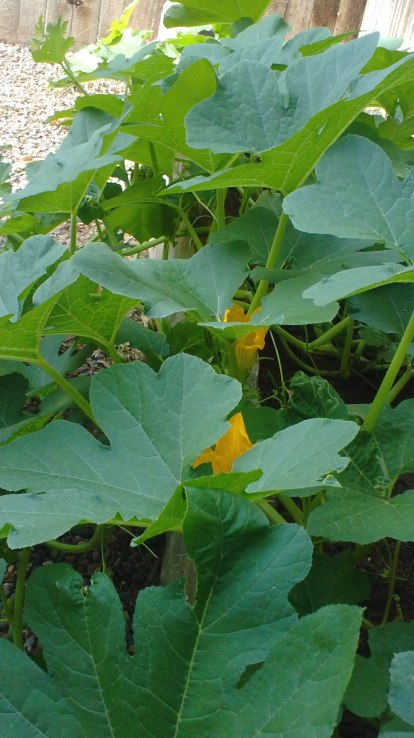
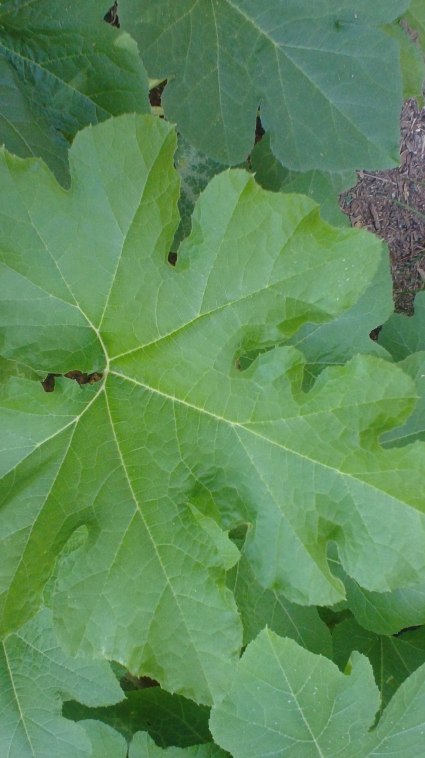
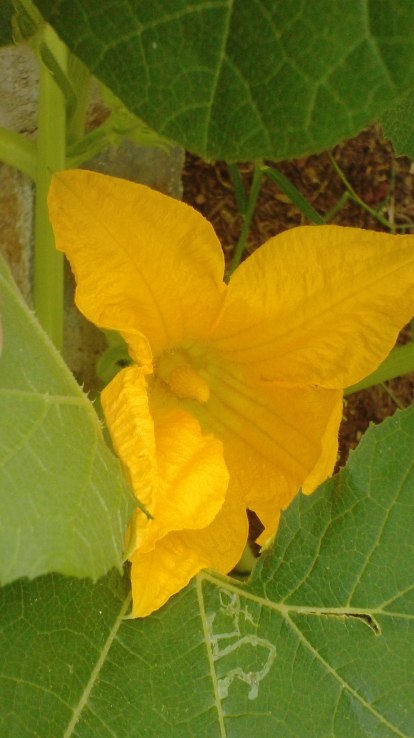
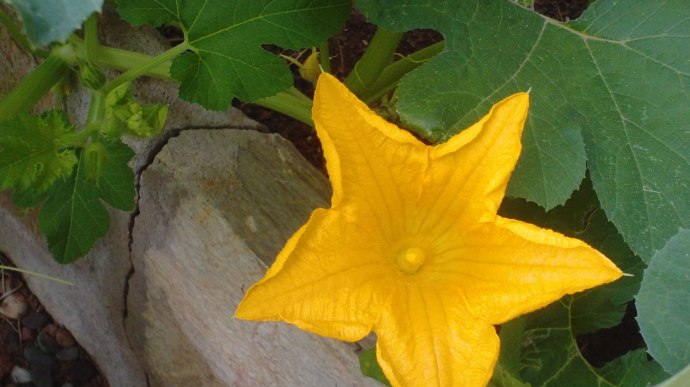
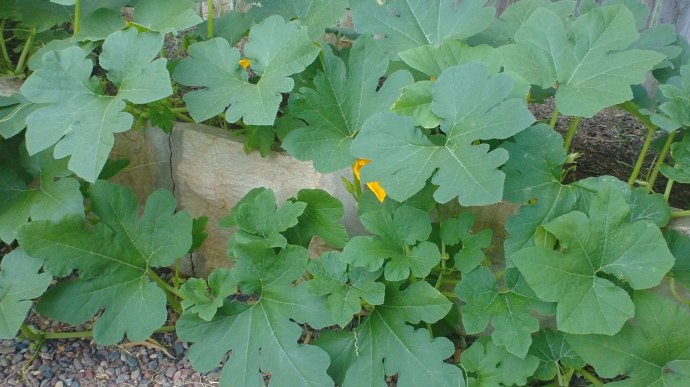
the pumpkin flowers are up


Here is a little portrait of a new pot of succulents at my house.
I love these guys.
I've been doing some experimenting experimenting, and it seems to be working...
Outside our South Carolina spring is definitely here, everything is covered with a fine sheet of yellow pollen and the temperature is rising. We've signed up for our plot in the community garden again this year, and are slowly starting to plant. The potatoes we put in early are coming up, and there are a lot of them! (squeals of excitement from the kids) I'm hoping the early planting will trick the pests and last years potato bugs will arrive to late...

Every day I go out my back door, down the walkway to my studio.
It is still winter around these parts, even though severe cold appears to be behind us. In Colorado we KNOW that we could still get 3 feet of snow! .. all the way into April.
Still, in my mind I have been planting flowers now. This flower bed that looks so bare, will be full of plants in around 12 weeks! The grass will be green even before that! I am so excited! I love Spring! I love when the birds get back from their vacation down south! The woodpecker is already pounding on our chimney and I just smile! Its all signs of Spring! Soon I will be working in my studio with my door and windows open. I am READY!!!
Filed under:
The Great Outdoors! 

I think valentines day should be about celebrating the people and things that make you happy.
Happy day to you, actually, take the weekend! We are off of school for 4 days.
Enjoy.
By:
KidLitReviews,
on 12/9/2012
Blog:
Kid Lit Reviews
(
Login to Add to MyJacketFlap)
JacketFlap tags:
magic,
Children's Books,
reviews,
guest blog,
silliness,
goldfish,
hats,
frogs,
trees,
children's book reviews,
plants,
middle grade books,
outer space,
middle grade book reviews,
Guest Post,
musical instruments,
forbidden,
grounded,
Angela Shelton,
fantsy. middle grade books,
guest post children's author,
magic hats,
middle grade author,
odd characters in children's books,
space ships,
Tilda Pinkerton Crash-Landing on Ooleeoo,
Add a tag
Kid Lit Reviews welcomes Angela Shelton, author of The Adventures of Tilda Pinkerton Book 1: Crash-landing on Ooleeoo. Kid Lit Reviews generally does not delve into articles for authors unless there is something of interest to the young reader. Today will be an exception. Ms. Shelton is writing on the importance of the teacher-writer [...]

By: Tatjana Mai-Wyss,
on 10/8/2012
Blog:
paperwork
(
Login to Add to MyJacketFlap)
JacketFlap tags:
plants,
botanical,
mushroom,
ink wash,
Fliegenpilz,
monochrome poison,
fly agaric,
flora,
sketchbook,
Add a tag
 |
| Amanita muscaria |
I've always wondered why so many people are obsessed with this pretty, but toxic, mushroom. It's associated with fairies, and often found in books with gnomes and fairytales. Looking into it, there is a lot of druidic background to the Fly Agaric, and there are a few opinions on how it got it's name. It's more than a little mysterious, and amply deserves a spot in my October gallery.

By: Tatjana Mai-Wyss,
on 10/5/2012
Blog:
paperwork
(
Login to Add to MyJacketFlap)
JacketFlap tags:
illustration,
halloween,
flora,
ink,
portrait,
sketchbook,
garden,
biology,
plants,
monochrome,
personal work,
pokeweed,
Add a tag
In honor of Halloween I've decided to celebrate October with a series of portraits of poisonous plants.
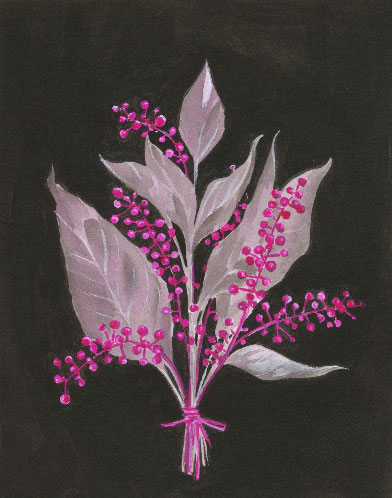 |
Phytolacca americana
|
We have a lot of Pokeweed here in South Carolina, and although I knew it was poisonous and grows like, well, a weed, I hadn't given it much thought. It turns out the US constitution was written with ink made from fermented pokeberries. Once you start looking there is a lot of information about the
American pokeweed. It 's a "food and medicinal plant", native americans used to paint arrows, feathers and even horses with juice from the berries, and although every part of the pokeweed is poisonous, it's also a
popular food. Surprisingly enough, the berries are the least poisonous part .
 |
| sketchbook |
 |
| watercolor sketch |
hanging out with my plants...
thinking about color and pattern...
more soon...
I've seen a number of books over the years about how seeds move from one place to another.
PLANTING THE WILD GARDEN, written by Kathryn O. Galbraith and illustrated by Wendy Anderson Halperin, is a beautiful, quiet book that had me hooked from the opening pages. It begins:
The farmer and her boy plant their garden. They drop seeds--tiny, fat, round, and oval--into the earth. From these seeds, pumpkins and peas, carrots and cabbages will grow. In the wild meadow garden, many seeds are planted too, but not by farmer's hands.
On this first double page spread is a pictures of a woman and her son, both kneeling in the dirt planting seeds. I was most enamored of the illustrations of the growth stages of the pumpkin, carrot, cabbage and pea that border the main illustration.
On the pages that follow are may examples of how wind, water, and animals help seeds disperse. Galbraith uses language that evocatively describes the sounds of the wind (Oooooo--whishhh!), rain PLip-plop!), acorns falling (thump, bump) minnows dining (Gulp! Gulp!) and more. The sentences are simple but so carefully crafted. There is a lovely rhythm to the lines and the story they tell. It all comes full circle when readers learn that people also help to plant the meadow.
The muted colors and dreamy quality of Halperin's work gives readers much to appreciate. Many of the illustrations beg to be pored over.
This book is a terrific introduction to seeds, how they travel, and can even be used to introduce the growing stages (life cycle) of plants. I'm using this one with my preservice teachers next week and predict this will become a classroom favorite. HIGHLY RECOMMENDED.
Author: Kathryn O. GalbraithIllustrator: Wendy Anderson Halperin
Publisher: Peachtree Publishers
Publication Date: April, 2011
Pages: 32 pages
Grades: K-5
ISBN: 978-1561455638
Source of Book: Personal copy
This review was written for
Nonfiction Monday. Head on over to
Books Together and check out all the great posts highlighting nonfiction this week.
SCENES FROM LIFE: A SHORT PLAYETTE
AT THE GARDEN CENTRE
SCENE: CUSTOMER STANDS AT THE RETURN COUNTER IN GARDEN CENTRE, HOLDING A PLASTIC BAG OPEN AT THE TOP
GARDEN CENTER EMPLOYEE
"Number 14...who's number 14?"
CUSTOMER
Here! That would be me! See? Here's my ticket. Number 14
GARDEN CENTER EMPLOYEE
Now that we've agreed on that, what can I do for you?
CUSTOMER
I'd like to return these plants, please
GARDEN CENTER EMPLOYEE
Flowering or green?
(customer opens bag, removes contents and places them on counter earth spilling everywhere)
CUSTOMER
These plants. They're annuals as you can tell...then again, maybe you don't garden...not everyone likes to play in dirt. That's a little garden humor, there!
GARDEN CENTER EMPLOYEE
Come again? You want to return...dead garden plants. Now I've heard it all
CUSTOMER
You have a money-back-no-questions-asked policy?
GARDEN CENTER EMPLOYEE
Yes but...
CUSTOMER
...well - these former, vibrant living things are no longer in this world. Gone to see their maker. Never to feel the heat of the sun, again. I have the bill here...
GARDEN CENTER EMPLOYEE
Lady - those plants are dead!
CUSTOMER
Right - and that's why I'm returning them! Oh the angst and guilt of garden passings!
GARDEN CENTER EMPLOYEE
That doesn't include plants!
CUSTOMER
Show me where it says that. Money back is money back.
GARDEN CENTER EMPLOYEE
When did you plant these? They're a collection of black mush. Can't even tell what they were
CUSTOMER
Dahlias. Planted them the week that you started selling them. March...I think... Yup - March
GARDEN CENTER EMPLOYEE
March? The ground was still frozen! How did you even get a spade in the ground
CUSTOMER
I managed. We garden lovers can make the impossible happen. So are you going to give me back my money?
GARDEN CENTER EMPLOYEE
Damn - there's ants crawling all over the counter...
(garden center employee smashes ants with her hand and fingers)
CUSTOMER
Even more reason to return me my money as soon as possible. Oh look - there goes a earwig. Boy those bugs sure can move fast...right accross the counter...
GARDEN CENTER EMPLOYEE
How about I replace those...whatever with live plants? Would that be okay?
CUSTOMER
That would be perfectly okay with me. By the way, what should I do with these dearly departed?
GARDEN CENTER EMPLOYEE
'I will not open my mouth to a customer...I will not open my mouth to a customer...' Um - just leave them here
CUSTOMER
Is it okay if I say good-bye to them?
GARDEN CENTER EMPLOYEE
Whatever...
CUSTOMER
(touching plants)
'Plants - I'm very sorry that my TLC didn't save you from extinction. I tried - I really tried! Go now - go meet your friends in the garden in the sky!'
GARDEN CENTER EMPLOYEE
Good. Said your goodbyes?
CUSTOMER
Yes. It's always so hard to deal with plant deaths
GARDEN CENTER EMPLOYEE
(grabbing dead plants and tossing them in trash can)
Not really. "Number 20 - who's got number 20?"
I'm honored to be featured in Sylvia Browder's wonderful blog for women authors.
Check it out: http://sylviabrowder.com/featured/mary-batten.html/
View Next 11 Posts


































lovely, so enjoying your enthusiasm for the plants and the spring growth (including yours!)